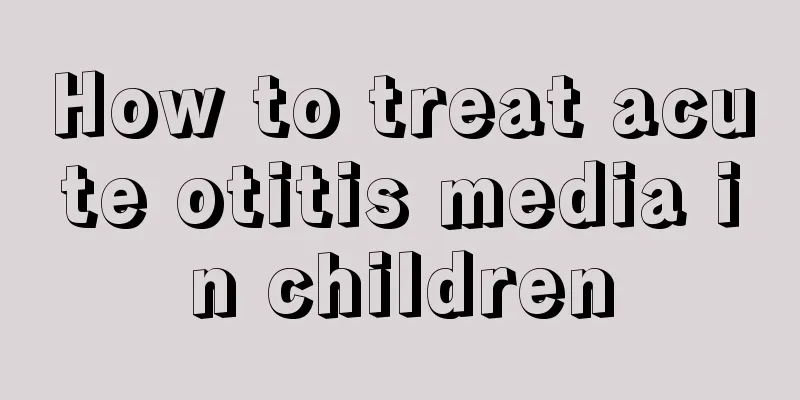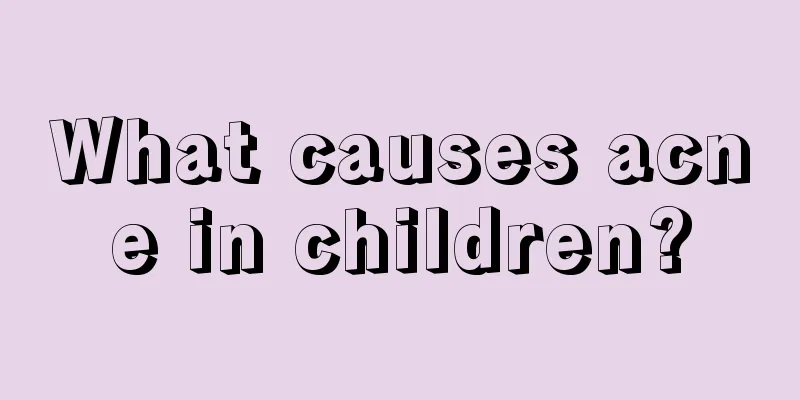Can infant hypoxic-ischemic encephalopathy be cured?

|
Due to problems in people’s current lifestyles, babies are born with some diseases, with hypoxic-ischemic disease being the most common one. So can hypoxic-ischemic encephalopathy in infants be cured? According to the answers given by some experts, it can be cured, but people need to spend more time and energy on this aspect. Next, let us find out whether hypoxic-ischemic encephalopathy can be cured? 1. Neonatal hypoxic-ischemic encephalopathy not only seriously threatens the life and health of newborns, but is also one of the important causes of disability among children in my country. There has been no breakthrough in curing this disease so far. 2. How to treat it? There is still no unified and complete treatment plan. (1) Three supportive treatments: maintaining ventilation function, maintaining good organ perfusion, and maintaining blood sugar at a high normal level. (2) Three symptomatic treatments: control convulsions, reduce intracranial hypertension, and eliminate brainstem symptoms. (3) Brain cell metabolism activators: application of citicoline and cerebrolysin. (4) The use of hyperbaric oxygen chamber, calcium channel blockers, and paralysis neurotrophic factor. 3. The sequelae is cerebral palsy, and rehabilitation treatment should be carried out. 1. Hypoxia (1) Perinatal asphyxia: including antenatal, intrapartum and postpartum asphyxia, intrauterine hypoxia, placental dysfunction, umbilical cord prolapse, compression and cord winding around the neck; abnormal delivery such as precipitous delivery, delayed delivery and abnormal fetal position; abnormal fetal development such as premature delivery, post-term delivery and intrauterine growth retardation. (2) Apnea: Repeated apnea can lead to hypoxic-ischemic brain damage. (3) Severe lung infection: Newborns with severe respiratory diseases such as severe lung infection can also cause this disease. 2. Ischemia (1) Severe circulatory system diseases: cardiac arrest and bradycardia, severe congenital heart disease, severe heart failure, etc. (2) Massive blood loss: massive blood loss or shock. (3) Severe intracranial diseases: such as intracranial hemorrhage or cerebral edema. Among the causes of HIE, neonatal asphyxia is the main cause of the disease, with antenatal and intrapartum asphyxia accounting for 50% and 40% respectively, and other causes accounting for about 10%. Prevention of this disease is more important than treatment, mainly focusing on preventing the onset of perinatal asphyxia, continuously improving obstetric techniques, promptly dealing with intrauterine distress, and ending delivery as soon as possible. Infants who suffer asphyxia after birth should be resuscitated promptly to reduce the incidence of HIE. Pregnant women should have regular prenatal check-ups, and high-risk pregnancies should be dealt with promptly to avoid premature birth and surgical delivery; obstetric techniques should be improved; fetal heart rate monitoring should be performed during delivery for high-risk pregnancies to detect fetal intrauterine distress early and deal with it; during delivery, after the fetal head is delivered, the mucus in the mouth and nose should be squeezed out immediately, and after birth, the oral and nasopharyngeal secretions should be squeezed out or sucked out again, and all preparations for neonatal resuscitation should be made. Once fetal distress is detected, provide oxygen to the mother immediately and prepare for resuscitation and oxygen supply to the newborn. After birth, newborns should lie flat with their heads slightly higher and less disturbed. 1. During the delivery process, the fetal heart rate must be closely monitored, and the fetal scalp blood pH and blood gas must be measured regularly. If intrauterine distress is detected, oxygen and intravenous glucose and other drugs must be given in a timely manner, and the best way should be chosen to end the delivery as soon as possible. 2. For newborns who suffer asphyxia after birth, we should strive to establish effective breathing and complete circulatory functions within 5 minutes to minimize the damage to brain cells caused by lack of oxygen after birth. 3. After resuscitation from asphyxia, the neurological symptoms of newborns should be closely observed and all vital signs monitored. Once abnormal neurological symptoms such as impaired consciousness, decreased limb tension, and difficulty in eliciting primitive reflexes are found, the diagnosis of this disease should be considered and treatment should be given as soon as possible to reduce the incidence of sequelae among survivors. Can hypoxic-ischemic encephalopathy be cured? Of course you can. So if your baby suffers from this disease, you must face it with a positive attitude. Don't give up treatment just because you think it is an incurable disease. Otherwise, not only the baby will suffer, but mom and dad will also feel very uncomfortable. This is a very bad consequence. |
<<: How to massage acupoints to make children grow taller
>>: Where are the massage points for children to grow taller?
Recommend
What to do if your child has bloating? Abdominal massage
Many babies experience bloating after meals due t...
What are the early symptoms of cerebral palsy in infants?
The incidence of cerebral palsy in infants is rel...
Is it normal for children to sleep all the time when they have a fever?
It is inevitable that children will have a fever ...
What should I do if my child's buttocks itch?
Generally speaking, when a child feels some kind ...
What medicine should be used for eczema of a three-year-old baby
Eczema is a disease that many people suffer from,...
Frequent constipation in children
The cause of constipation in adults is related to...
White crusty scalp
Babies with pink and tender skin have always been...
What causes acute urticaria in children?
Children's immune systems are at a critical s...
Is it because my child is growing taller if his legs hurt?
Parents pay extra attention to their children'...
What to do if your newborn spits up while lying down
Spitting up is a common symptom in newborns. This...
What should I do if my 10-month-old baby has phlegm in his throat?
The baby's body resistance is very weak, espe...
Why do children have head lice?
Children have a smaller range of activities and t...
What to do if your 3-year-old baby has a poor physique
Usually every parent hopes that their baby has a ...
What is the best treatment for asthma in children?
Childhood asthma is a common disease in life. It ...
Vision standards for 9-year-old children
In fact, many friends mistakenly believe that a b...









